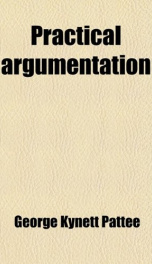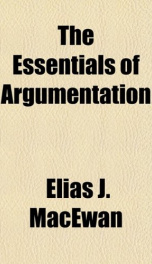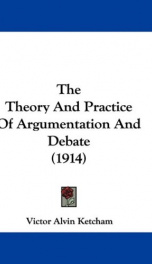practical argumentation

Purchase of this book includes free trial access to www.million-books.com where you can read more than a million books for free. This is an OCR edition with typos. Excerpt from book: CHAPTER III THE INTRODUCTION PERSUASION Every complete argument consists of three parts: introduction, discussion, and conclusion. Each of these divisions has definite and specific duties to perform. The work of the introduction is threefold: (1) to conciliate the audience; (2) to explain the subject; and (3) to outline the discussion. As the conciliation of the audience is accomplished by an appeal to the emotions rather than to the reason, it is properly classified under persuasion. Explaining the proposition and outlining the discussion are of an expository nature and will be discussed under the head of conviction. As has been stated in a previous chapter, the amount of persuasion to be used in any piece of argumentative work depends entirely upon the attending circumstances. The subject, audience, author, occasion, and purpose of the effort must be taken into consideration. But whether the amount used be great or small, practically every argument should begin with conciliation. The conciliation of the audience the word audience is used throughout this book to designate both hearers and readers consists of gaining the good will of those to be convinced, of arousing their interest, and of rendering them open to conviction. No argument can be expected to attain any considerable degree of success so long as anything about its author, or anything in the subject itself, is peculiarly disagreeable to the people it is designed to affect. If the ill will remains too great, it is not likely that the argument will ever reach those for whom it is intended, much less produce the desired result. In addressing Southern sympathizers at Liverpool, during the Civil War, Beecher had to fight even for a hearing. The speech of an unpopular Senator frequently empties the Senate chamber. ...
Info about the book
Author:
Series:
Unknown
ASIN:
B002K8Q0BS
Rating:
4/5 (3)Your rating:
0/5
Languge:
English
Users who have this book
Users who want this book
What readers are saying
What do you think? Write your own comment on this book!
write a commentif you like practical argumentation try:
Other books by this author
Do you want to read a book that interests you? It’s EASY!
Create an account and send a request for reading to other users on the Webpage of the book!









